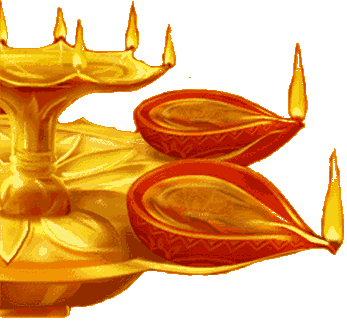Holi
Holi, the festival of colours celebrated today, will once again be celebrated with family and friends spraying colour on each other. Did you know its origins are from Hindu mythology?
One story says how Kamsa was trying to kill Krishna. But Krishna escaped and was brought up at Nanadangaon by Yashodha and Nandakumar. When Kamsa discovered this he ordered the demon Putna to kill him. Putna was a fearful looking demon. So, she took the form of a beautiful woman and went to Yashoda's house.Yashoda allowed this beautiful stranger to carry Krishna. When Putna was alone with the boy, she tried to kill him. After a time Yashoda came looking for her son and found Krishna unharmed but Putna dead.
People celebrated the death of the demon and holi was born. The custom of spraying colours on one another also has its origins in another story. It is believed that Krishna and other boys from their village would visit Radha's village Barsana on holi. They would then splash colour and water on Radha and the other Gopis. Soon it became a common practice until it became a tradition.
Good over evil
Yet another story relates to Prahlad, son of Hiranyakashipu, an asura king with great powers. These powers made him arrogant and evil and he declared himself the strongest creature in the world. His son, Prahlad, was an ardent Vishnu devotee. Hiranyakashipu was angered by his son's devotion to Vishnu. So Hiranyakashipu ordered Prahlad to be burnt to death. At his request Holika, sister of Hiranyakashipu entered the pyre with Prahlad on her lap. When the fire burnt out, Holika was dead but Prahlad emerged unscathed. Holi is thus the celebration of the death of Holika.
The tradition of the pyre is followed even today. On the eve of holi people make a bonfire of twigs, leaves and bark to mark the death of Holika. Family, friends and neighbours gather around the fire.
Holi thus is the celebration of the victory of good over evil, irrespective of the story we believe in. In practice holi is a community festival. It is also a spring festival signifying the end of the cold dark winter and the beginning of spring. It is a celebration of new life that can be seen everywhere after the dry barren winter. More importantly it is symbol of a new beginning.


0 Comments:
Post a Comment
<< Home